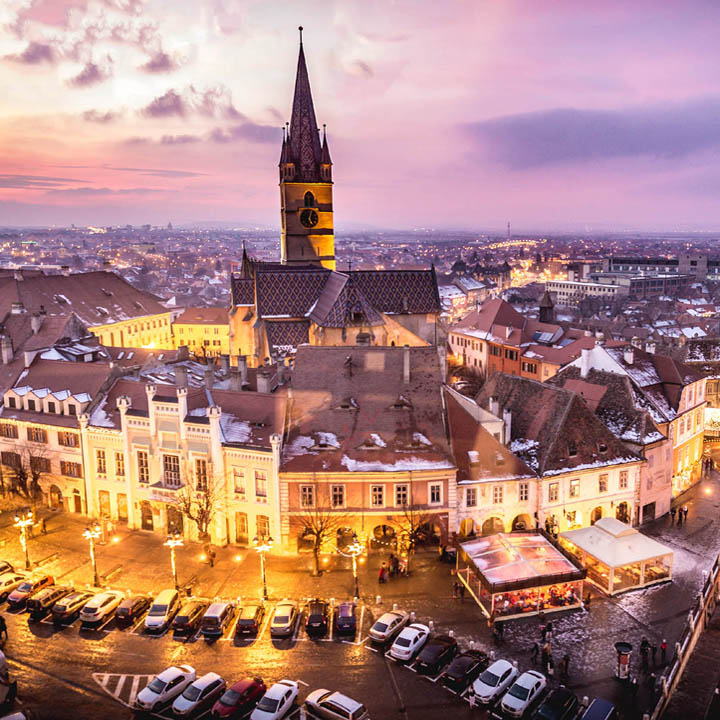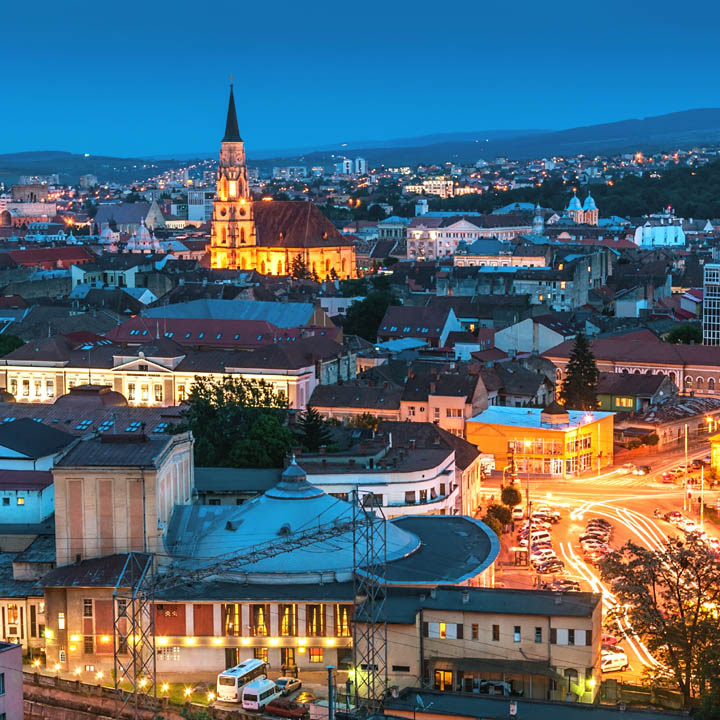We invite you to take a walk and discover Cluj’s old history and traditions, the interesting architecture and culture, and to get a glimpse of this modern Transylvanian city. We will start the tour right next to the old Benedictine monastery, which was also the starting point in the city’s evolution. The birth houses of Mathias Corvinus (king of Hungary) and Stephan Bocskai (ruler of Transylvania and great promoter of the religious reformation), the old market square, and the many guilds and craftsmen houses, reveal great stories about the people who used to live here many centuries ago.
Right next to this quiet pedestrian area we will visit the city’s main square, along with some of its most important monuments: the catholic church of St. Michael (the second largest Gothic building between Vienna and Istanbul), the statue of Mathias Corvinus, the unique mirror street (where all houses were built symmetric on both sides of the street) and the majestic Baroque palace of the Banffy family.
Departing from the main square, we will walk to the headquarters of the Babeş-Bolyai University, a historical institution with an ongoing tradition since the 16th century. Nowadays it is one of Europe’s largest multicultural universities, with almost 60.000 students. Passing along several former palaces that now host various faculties and administrative buildings of the university, we will reach the former Franciscan monastery, famous for both its architecture and its almost perfect acoustics. The church has been restored in recent years, bringing back to light the beauty of this superb monument.
Just behind this monument, we will visit the last remaining medieval tower still standing, a reminder of the city’s past military ambitions.
Our tour will end with the visit of the former lumberjack market which used to be a gathering place of the Romanian community. At the end of the 19th century, the famous Viennese company “Helmer und Fellner” were given the task to build the city’s theater and opera house. Nowadays, it is one of Cluj’s most important cultural institutions. On the other side of the square, we will discover the Orthodox cathedral. Built after the First World War in neo-Byzantine and neo-Romanian style, it is one of the important pieces of this colorful but tolerant, multicultural, and multiethnic mosaic.




